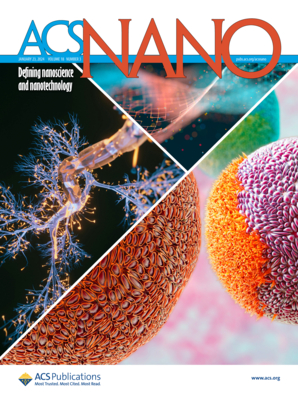Optimizing Amphoteric Cellulose Additives with Complexation–Adsorption Mechanisms to Stabilize the Zn Anode
IF 15.8
1区 材料科学
Q1 CHEMISTRY, MULTIDISCIPLINARY
引用次数: 0
Abstract
The growth of Zn dendrites and interfacial side reactions are two critical challenges impeding the commercial application of aqueous zinc batteries (AZBs). The amphoteric electrolyte additive is considered a convenient and efficient strategy to stabilize the Zn anode. However, most studies overlook the critical impacts of their charge compositions and the corresponding mechanisms on Zn2+ electroplating behavior. Here, we use amphoteric cellulose as an exemplary research object, as the number of positive/negative groups can be easily and effectively controlled. We elucidate in detail the interplay between the complexation and adsorption mechanisms of the amphoteric cellulose additive in AZBs. Specifically, the amphoteric cellulose additive not only guides and regulates Zn2+ deposition but also forms a uniform protective layer on the Zn surface. As a result, the optimal additive enables dendrite-free and side-reaction-suppressed AZBs, leading to a Zn||Zn cell with a high depth of discharge of 68.4%, and a Zn||NH4V4O10 cell with a high reversible specific capacity of 310 mAh g–1. This work demonstrates a promising strategy by elucidating the role of charge composition in electrolyte additive design, advancing the development of stable AZBs.

锌枝晶的生长和界面副反应是阻碍锌水电池(AZB)商业化应用的两大关键挑战。两性电解质添加剂被认为是稳定锌阳极的一种方便有效的策略。然而,大多数研究都忽略了其电荷成分和相应机制对 Zn2+ 电镀行为的关键影响。在此,我们以两性纤维素为例进行研究,因为其正负基团的数量可以轻松有效地控制。我们详细阐明了两性纤维素添加剂在 AZB 中的络合和吸附机制之间的相互作用。具体来说,两性纤维素添加剂不仅能引导和调节 Zn2+ 的沉积,还能在 Zn 表面形成均匀的保护层。因此,最佳添加剂可实现无树枝状突起和副反应抑制的 AZB,从而使 Zn||Zn 电池的放电深度高达 68.4%,Zn||NH4V4O10 电池的可逆比容量高达 310 mAh g-1。这项工作阐明了电荷成分在电解质添加剂设计中的作用,从而展示了一种前景广阔的策略,推动了稳定 AZB 的开发。
本文章由计算机程序翻译,如有差异,请以英文原文为准。
求助全文
约1分钟内获得全文
求助全文
来源期刊

ACS Nano
工程技术-材料科学:综合
CiteScore
26.00
自引率
4.10%
发文量
1627
审稿时长
1.7 months
期刊介绍:
ACS Nano, published monthly, serves as an international forum for comprehensive articles on nanoscience and nanotechnology research at the intersections of chemistry, biology, materials science, physics, and engineering. The journal fosters communication among scientists in these communities, facilitating collaboration, new research opportunities, and advancements through discoveries. ACS Nano covers synthesis, assembly, characterization, theory, and simulation of nanostructures, nanobiotechnology, nanofabrication, methods and tools for nanoscience and nanotechnology, and self- and directed-assembly. Alongside original research articles, it offers thorough reviews, perspectives on cutting-edge research, and discussions envisioning the future of nanoscience and nanotechnology.
 求助内容:
求助内容: 应助结果提醒方式:
应助结果提醒方式:


